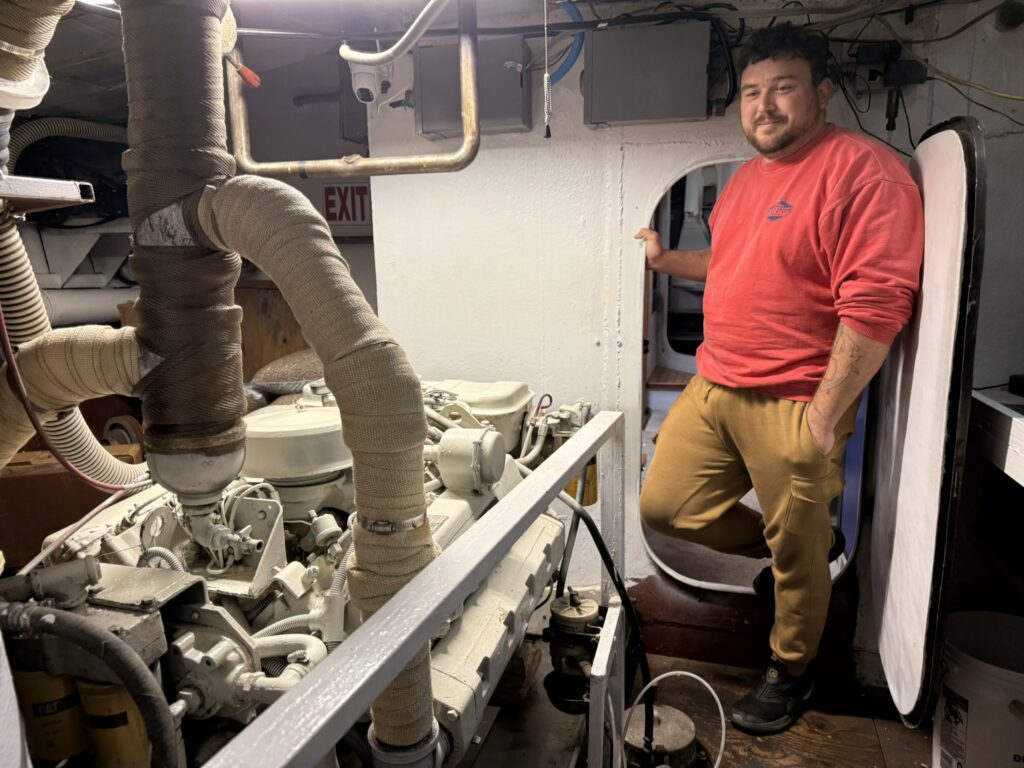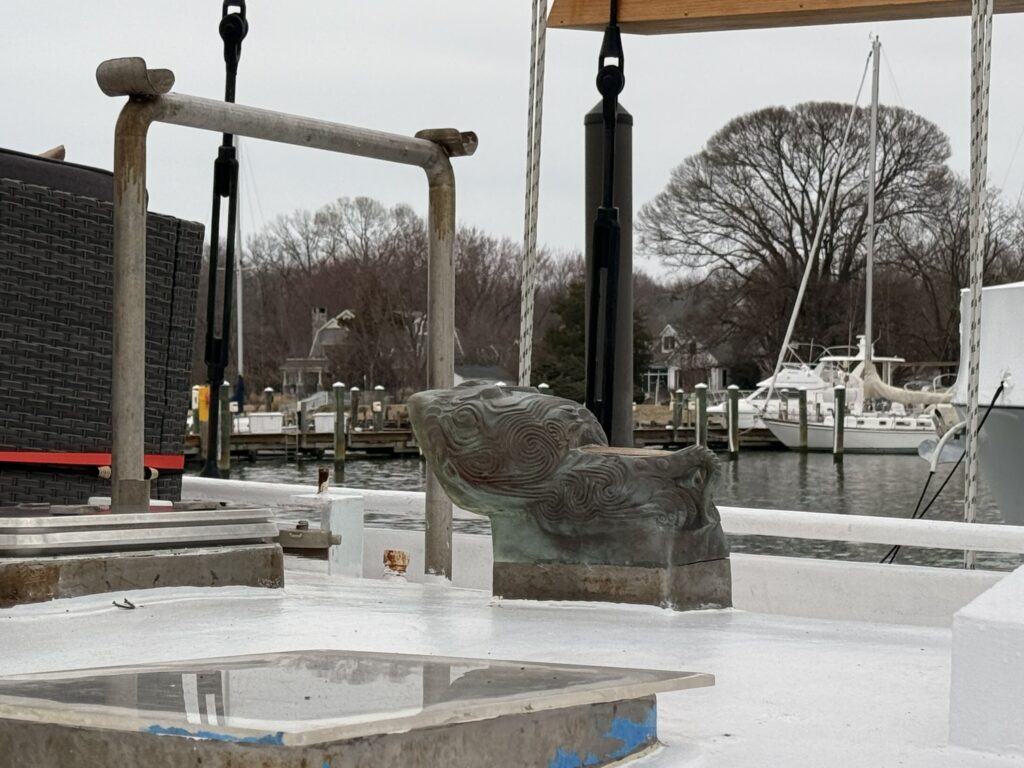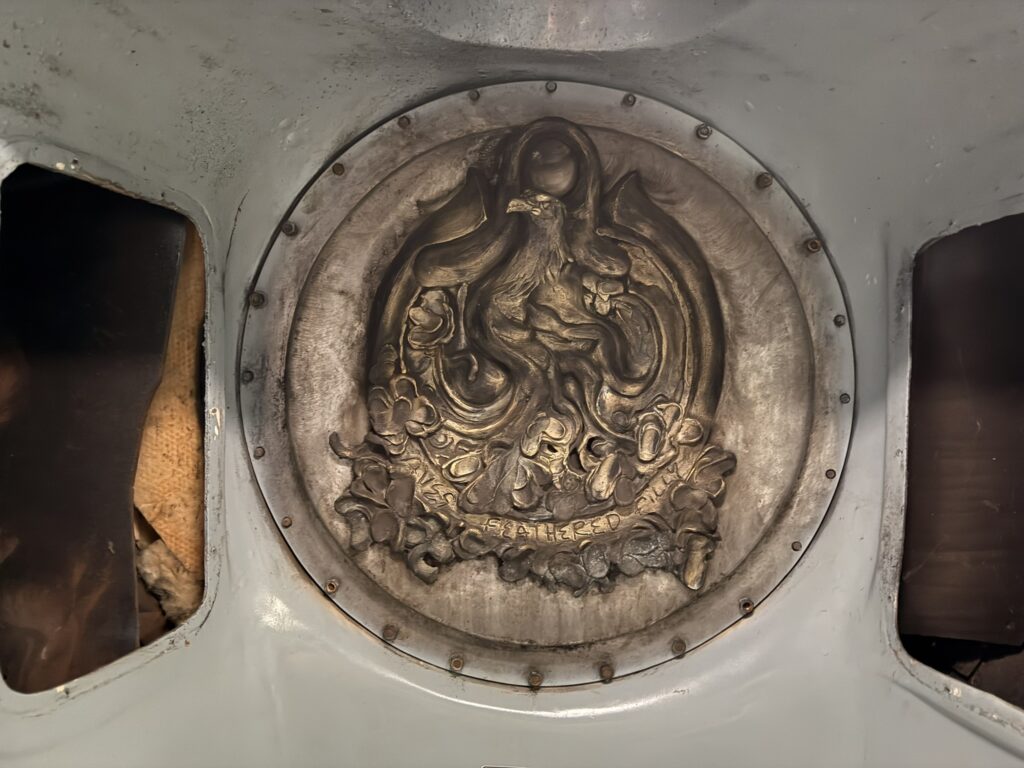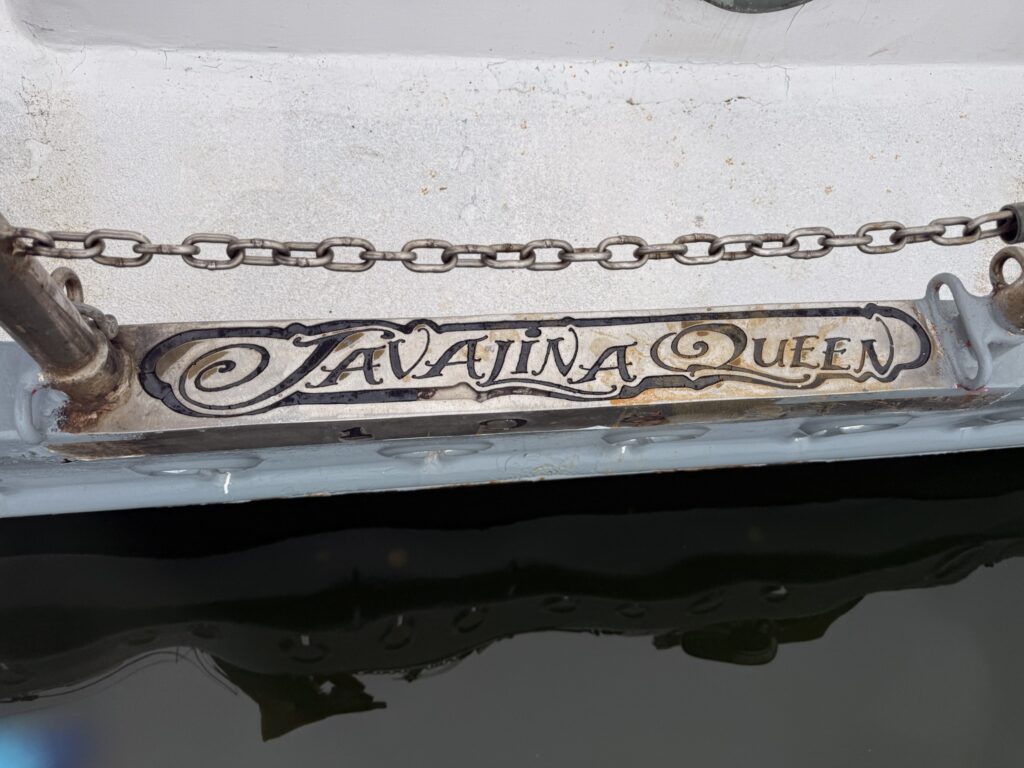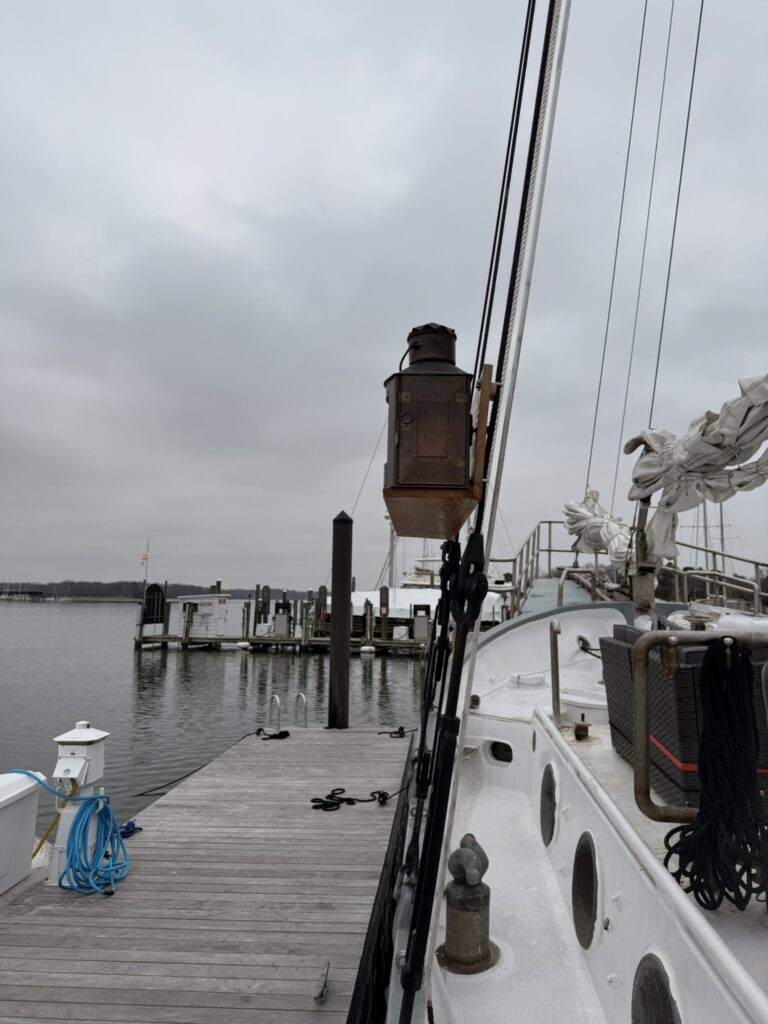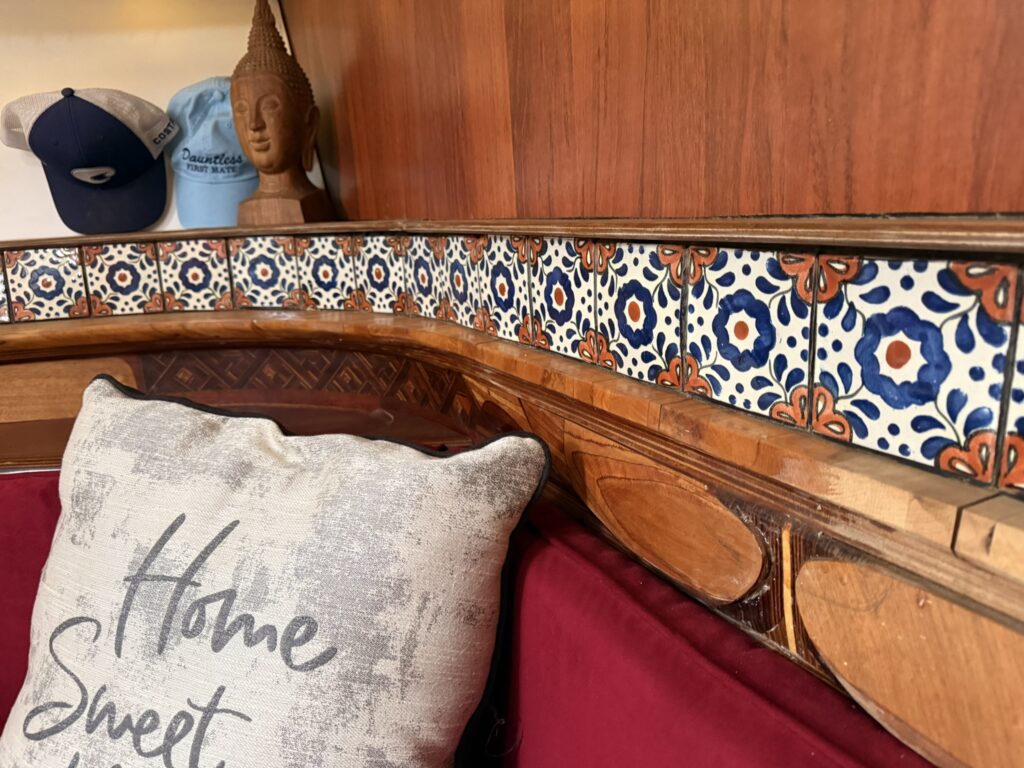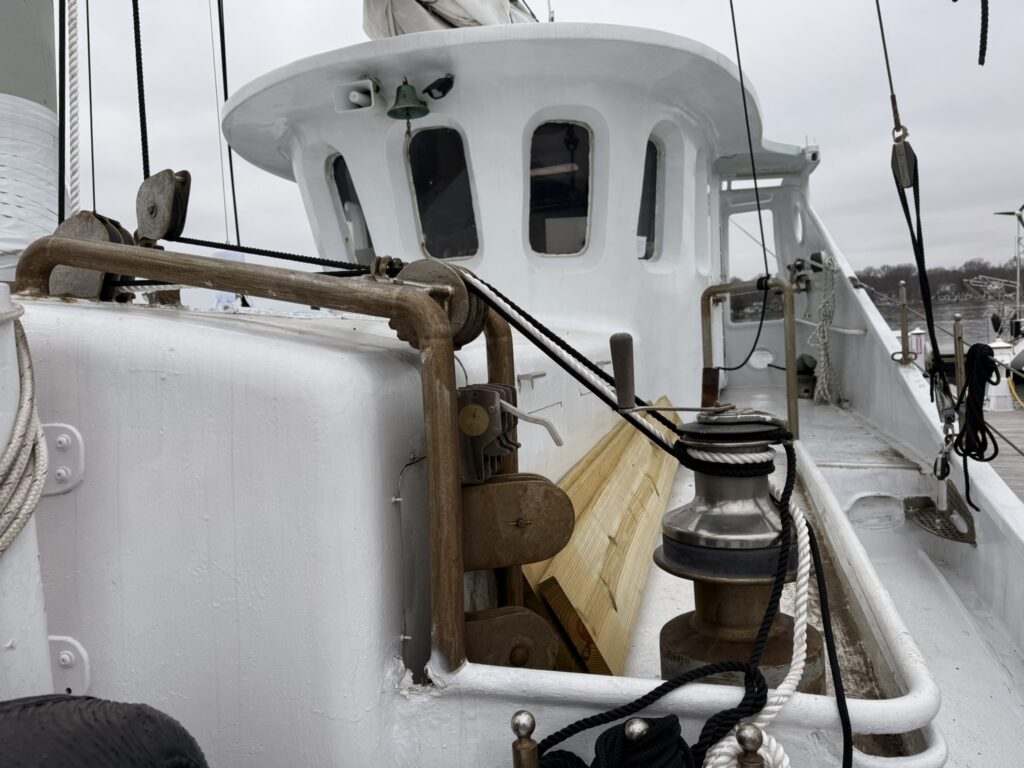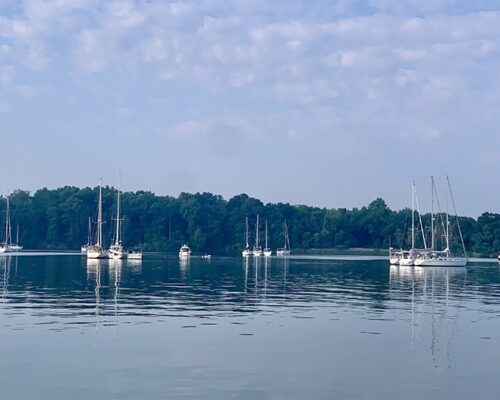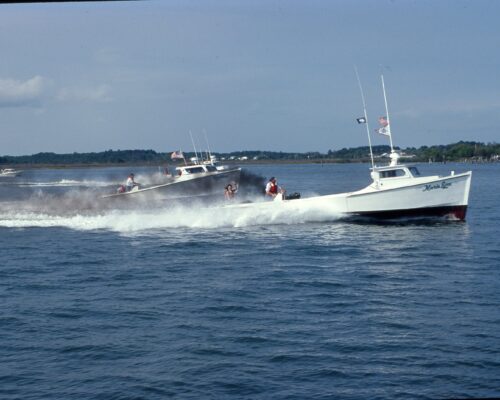Most Bay boaters will agree: One of the most fun parts of being out on the water is seeing the other vessels that pass by. Here, the sparkling white hull of a yacht. There, the graceful lines of a racing sailboat. Sometimes it’s a foreign ship you haven’t seen before, on its way to port.
Every now and then, a boat comes by that is so unusual it demands your full attention. “What is THAT?” you wonder, pulling out the binoculars.
That is exactly what happened to CBM contributor and boating photographer David Sites in February. On one of his winter jaunts to photograph Thomas Point Shoal Lighthouse, Sites saw what he calls “a very unique-looking vessel” coming his way. It was 76 feet long with two soaring masts, a stern sweeping up to a tall pilothouse, and a thick steel hull. Across the transom was painted the name Dauntless.
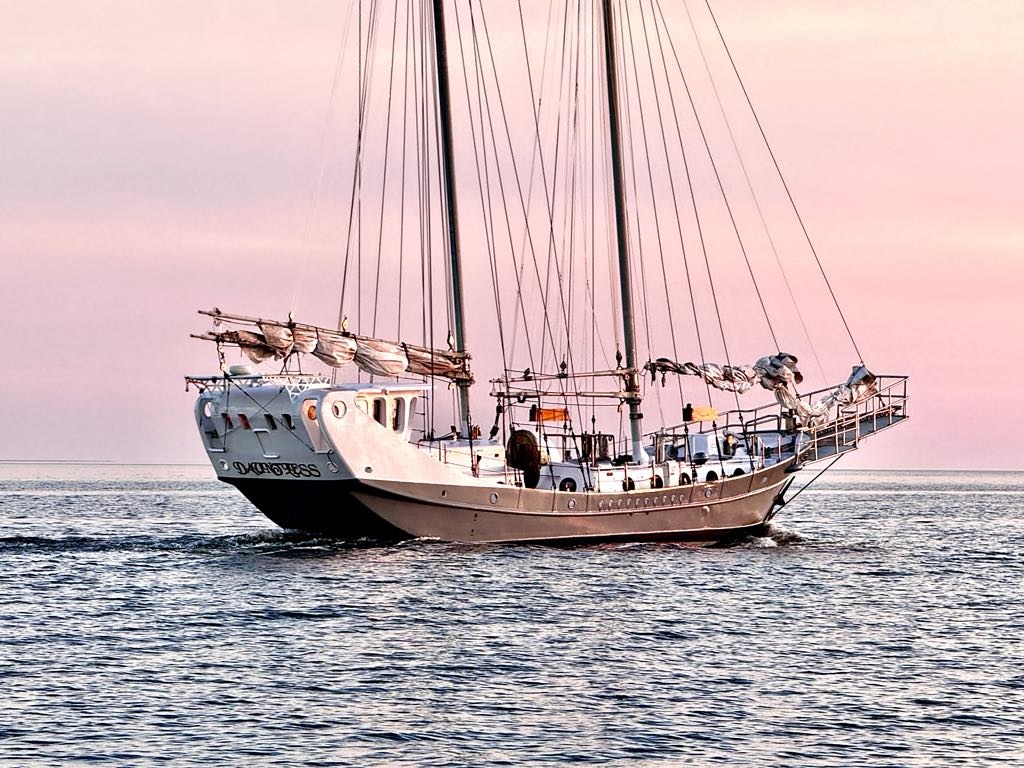
Sites snapped photos of the unusual schooner and successfully tracked down its owner—on the internet, of course. There is always a story behind a boat like Dauntless, and this one is a story of redemption.
The Cambridge Dictionary defines dauntless as “showing determination and no fear”. It’s an apt description for Alex Cooney, the owner of the massive steel vessel that is now docked at Chesapeake Yacht Club on the West River.
Cooney, 30, is no stranger to ambitious boat projects. A boatbuilding graduate of The Landing School in Maine, he owns a marine business, All Star Marine Services, in Deale, Maryland. Current projects include restoring a tug. Until last year, he owned and lived aboard an older Hunter 33 sailboat. But he went looking for something larger once he found a first mate: his girlfriend, Sami Sexton, 26.
Sexton grew up powerboating and enjoyed the boating lifestyle before she met Cooney. For their first date, he took her out for a sail. She wasn’t put off by his liveaboard lifestyle. Her biggest concern? As a clothing store employee, she had a sizeable wardrobe. The Hunter 33 just didn’t have much closet space.
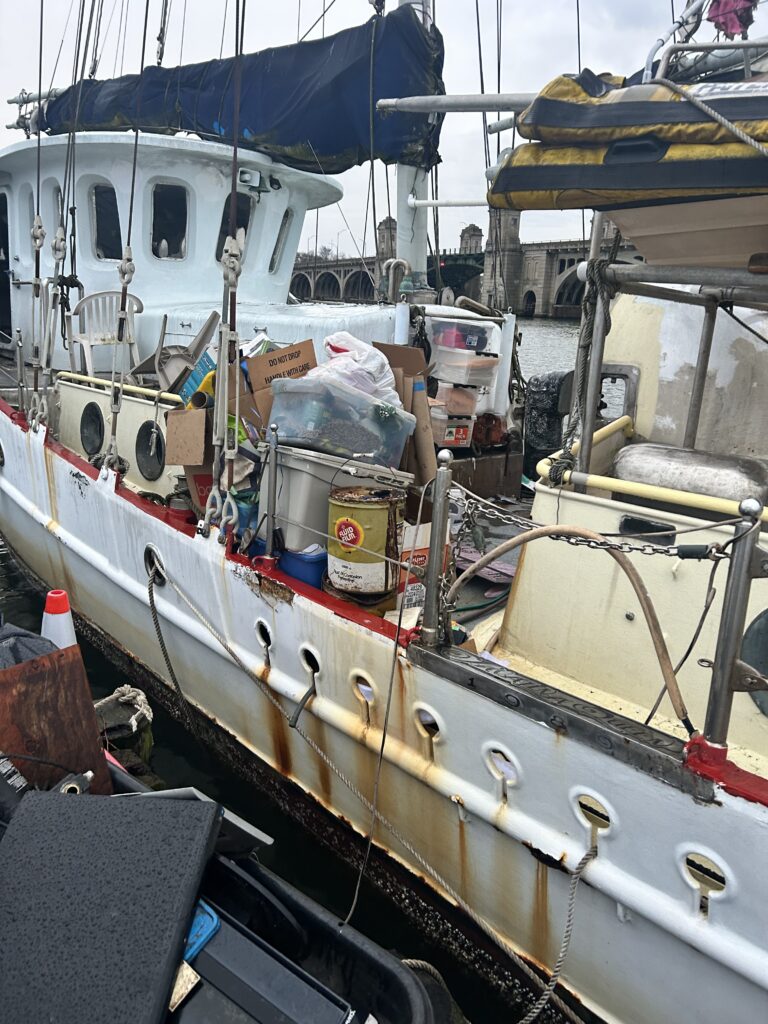
On a whim, the couple took a look at boats listed on Facebook Marketplace. The first one that popped up was the steel-hulled, gaff-rigged schooner that would later become Dauntless. It was being offered for free by Baltimore Yacht Basin, where it had sat for 15 years. Abandoned, the schooner was beginning to sink and Cooney estimates it was probably a couple of weeks away from going under. It was being used as a garbage scow by liveaboards at the marina and junk filled every compartment of the boat’s spacious cabin.
With no opportunity to board the boat, inspect it, or even get close, Cooney and Sexton took a gamble on 76 feet of steel. It would turn out to be the second chance the storied schooner needed.
Like so many vessels, the boat began as one person’s dream. Arthur “Art” Benson, a renowned Baltimore sculptor and former faculty chair at the Maryland Institute College of Art (MICA), wanted to build a boat he could sail around the world.

Adept at molding metal, Benson made his hull (and many other parts of the boat) entirely of scrap steel. Individual steel pieces were cast into one overall body. “The whole boat’s a jigsaw puzzle,” Cooney tells us.
The steel is 3/8″ thick. It’s a full displacement hull, so almost all of the boat’s cabin is under the waterline. The boat was equipped with 16 ballast tanks that could be filled with water, like you’d see on an icebreaker. It’s clear Benson intended to take the boat into extreme conditions.
In a 1990 art installation, in which Benson detailed the boatbuilding project as if it were an art piece, Jeanne Johnson Dudziak of the Baltimore Sun describes Benson’s build this way:
There appears to be a heavy, industrial sort of weightiness to Mr. Benson’s hulk of a hull, but there’s a gracefulness as well. The components of the boat seem both unified and incongruous, making it a hybrid sort of vessel that taps into the universal desire to take whatever fate, God or the forces of nature have dealt us, assimilate it through the creative process, and make it our own unique means of transport and adventure.
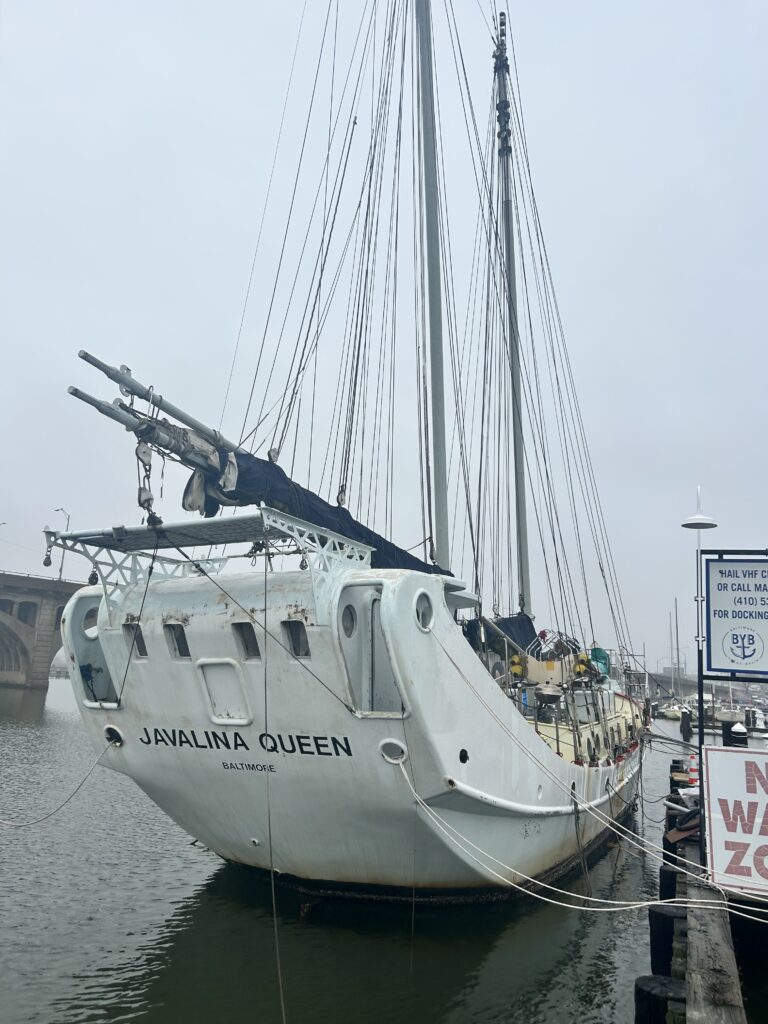
Cooney tells us Benson never used a set of plans in the build, which necessitated some trial and error. Benson built the hull a total of three times. The first time, the keel was too long. The second hull was too shallow, but the third time worked well. He named the boat Javalina Queen. A javelina is a small, pig-like, tusked mammal that is found in the American Southwest and Central and South America.
Benson had other unusual ideas he incorporated into the boat. “There are pulleys all over,” Cooney points out, which allow winches on deck to run like a car axle, powered by the boat’s 300hp diesel engine. It’s reminiscent of a 19th-century machine powered by steam engine. Given Benson’s artistic background, the boat includes fascinating carved details, some still unfinished. A large, metal medallion adorns the wall of the head as you face the marine toilet.

Benson’s public art displays are highly regarded today. His giant-sized Tinkertoys-inspired sculpture Nut and Bolt, installed in 1982, is still a treasured landmark in Baltimore’s Mt. Royal neighborhood. According to the Bolton Hill Community Association, it was restored two years ago with $50,000 in Maryland State Arts Council funding.
He also created public sculptures in Columbia, Maryland, and at Edgar Allen Poe’s resting place of Westminster Hall and Burying Ground.
Sadly, Javalina Queen, one of Benson’s greatest works, never saw the blue water it was built for. Benson and his son worked side by side on the boat until the elder Benson was overcome by health problems and had to walk away. The schooner languished until Cooney entered the scene.

Cooney and Sexton say the decision to take on the schooner prompted a serious relationship talk. At the time, they had been together only six months. Sexton recounts how Cooney stopped to make sure he had her buy-in, given the major commitment the boat was about to become. Sexton isn’t afraid of hard work; she went for it.
Because he works in the industry, Cooney had access to the towboats needed to move Javalina Queen. He brought it to Herrington Harbour to be hauled out, and he admits he didn’t give the boatyard many details about the schooner’s condition. The hull was the biggest nasty surprise, he says. Cooney thought it had one leak, but he says when the boat was hoisted out of the water, it looked like a colander draining water through dozens of holes. “It’s all just work, isn’t it?”
An expected month on the hard turned into seven months. In all, Cooney filled more than 200 holes in the hull. “I think they were afraid the boat would never leave,” he quips.
In the boatyard, the behemoth schooner caused quite a stir. He and Sexton quickly learned that they would attract attention anywhere they went. “I had no idea it would be as big a deal as it is to people,” Cooney says.
He recalls that the reactions of others at the marina were very similar. “You got a pretty big project there, don’t ya?”, they would say, shaking their heads.
It would have been easy for Cooney to get discouraged. He had attempted to save another boat in an ambitious project once before—and failed. “It was hundreds of thousands of dollars down the drain. It hurt my pride,” he admits. “I wasn’t sure if I was ever going to save a ship again.”
With a few more years’ experience under his belt and lessons learned, Cooney stuck with his schooner project and got it right. He relaunched the Javalina Queen as Dauntless and, with Sexton’s help, made the boat liveable. The colander-like hull is now watertight. The main saloon that had junk piled higher than its dining table is now a cozy living room, which showcases the tilework and carved-wood details Benson installed so long ago. The forward cabin is a comfortable sleeping quarters and there are plans to make a “walk-in closet” for Sexton’s clothes in the larger aft cabin.

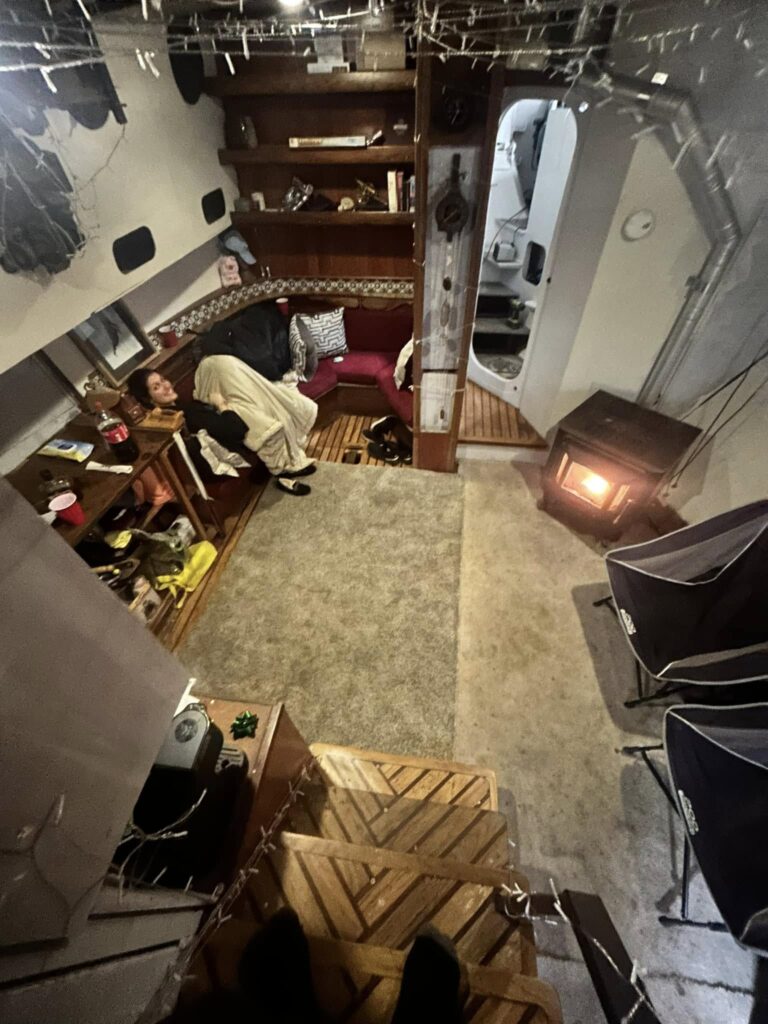
Some aspects of the schooner were in surprisingly good shape, like the engine and the sails. Other aspects needed major updates, like the navigational instruments. Cooney says that Benson didn’t want any electronics on the boat at all—nothing that could possibly break while you’re far from shore. Cooney has since added GPS, autopilot, radar, and AIS.
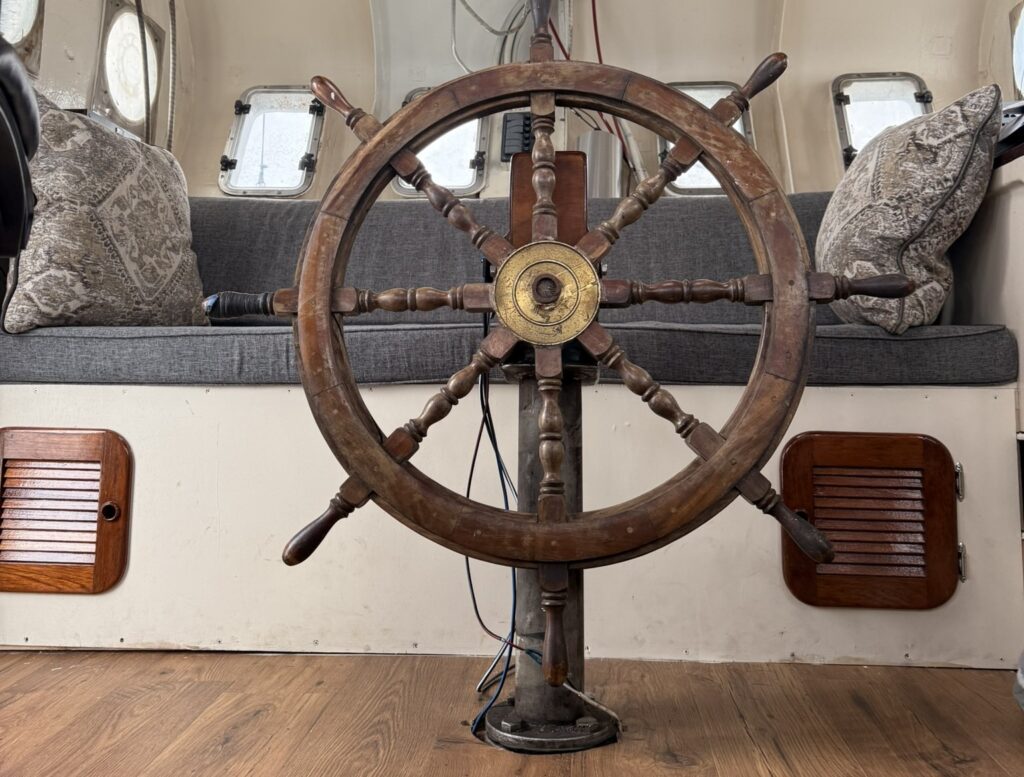
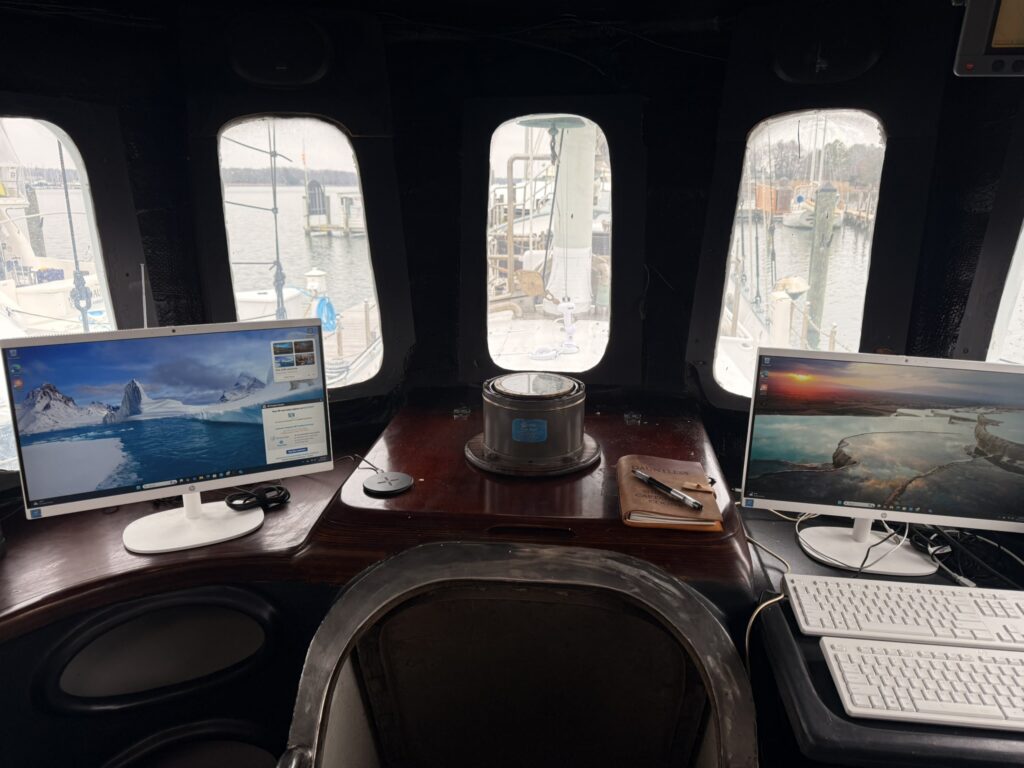
He is also considering reconfiguring the sails from gaff-rigged to Bermuda-rigged to make it more manageable to sail without a full crew. As it is now, he says, “You really need someone on deck for each sail.” The boat carries two jibs, a foresail main and an aft main, along with an asymmetrical ballooner. Its aft mast measures 96 feet tall. (I had no trouble finding the boat on the Chesapeake Yacht Center docks.)
So far, Cooney and Sexton have taken Dauntless out for exactly one pleasure cruise—the February ride when David Sites spotted them with his camera. They took the schooner up Ego Alley in Annapolis that day, attracting a fair amount of attention.
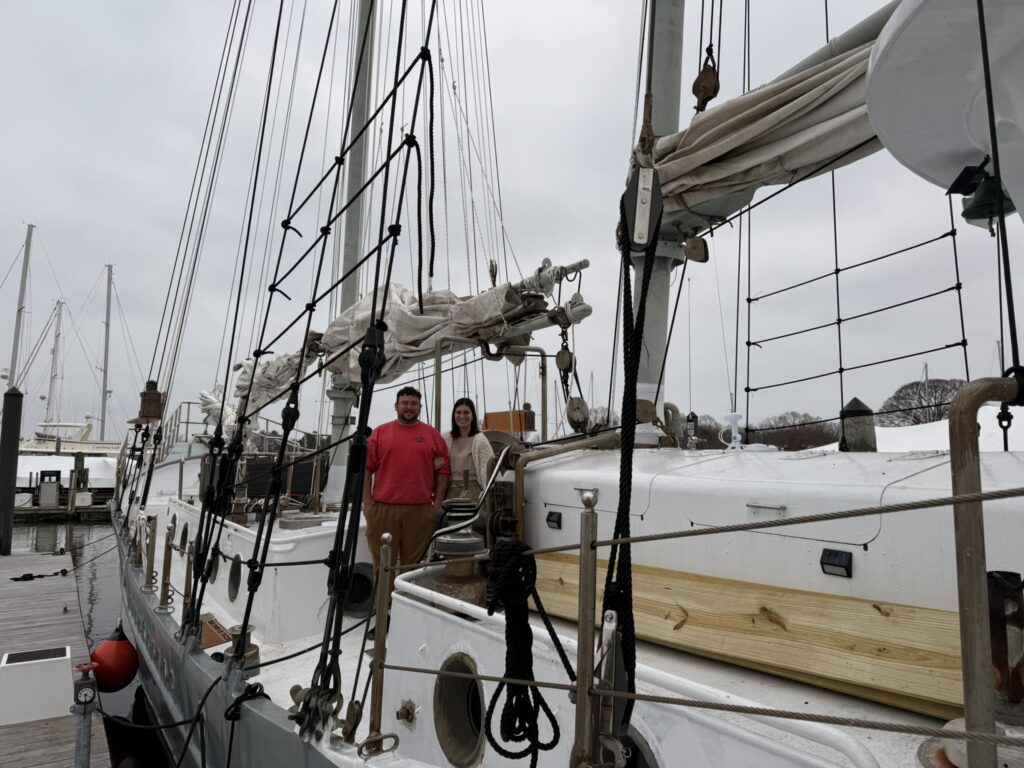
Cooney isn’t afraid of attention, though. In fact, he has boldly registered for the Great Chesapeake Bay Schooner race to be held this fall. Dauntless will be racing in the AA Class, likely to be pitted against none other than the Pride of Baltimore II. As the event’s first official registrant, Cooney says committing to the race will give him a solid deadline to wrap up projects and make Dauntless cruise-ready.
Ultimately, Cooney and Sexton plan to take the schooner into international waters. He dreams of the Arctic, sailing around Greenland and Iceland inside Dauntless‘s snug pilothouse. Sexton interjects with a smile, “It would also be nice to go warm places, too.”
With the young couple’s adventurous spirit and sweat equity poured into the boat, Art Benson’s vision for his schooner is on its way to becoming reality.
“The plan,” Cooney says, “is to live the dream it was built for.”
Here are few photos of some of Dauntless‘s unique features. Keep an eye out for the schooner on the Bay this spring.
